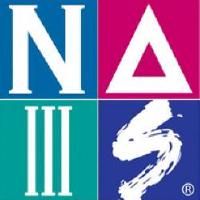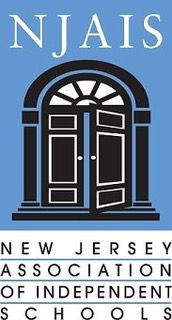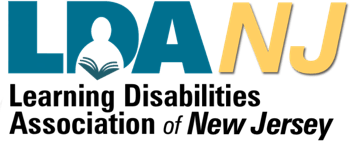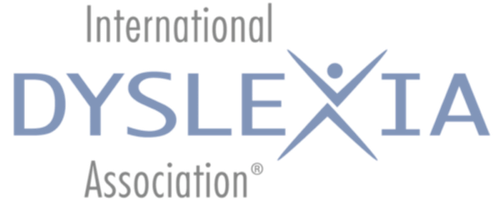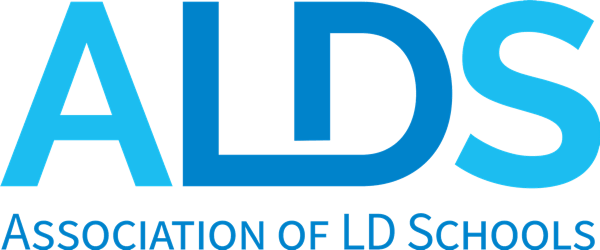“Teachers motivate minds, guide learning, share achievements, inspire a love of knowledge, and lead our youth to a brighter future.”
In this week of celebration and recognition of the extraordinary teachers at The Craig School, it is most fitting to honor them in the words of our students themselves. This letter, written to one of our middle school math teachers, by a current 10th-grade student who started her journey at The Craig School during middle school, highlights the lasting impact of our teachers:
I would properly like to thank you for taking the time out of your busy schedule to read my letter. Thank you so much for helping me with math when I was struggling. Not only have you made math my favorite subject, but you helped me to believe in myself and encouraged me to push myself to achieve bigger and better things. Thank you for encouraging me and making me feel like I can succeed in anything that I do. I know that all of your students will carry on the lessons you have taught us. Thank you for making every day feel like a new adventure and for making every day in your class so much fun.
Before I came to Craig, I hated math and I struggled with it—no one was teaching me the right way. You offered to put me in a higher class in the eighth grade, and that pushed me to be able to do ninth-grade math and now, Geometry. I realized I couldn’t thank you enough. Without your help, I would not have achieved the distinction of High Honor Roll in math class. Thank you for making everyone feel so special and for always brightening up the room when you walk in.
This is what our teachers do, this is how they impact your children, and this is how our students feel. Our students have found a safe, positive school environment where they can try challenging things and know at the end of the day, whether they reach immediate success or not, our teachers support them every step of the way through with their unwavering belief in the ability and capability of each student. Let’s celebrate the exceptional teaching happening at The Craig School!
Dr. Kara A. Loftin
Today, I wanted to bring attention to our extended school year (ESY), Summer Academy, for students in grades 2-12, and Summer Enrichment programs. Last year, we successfully provided a meaningful extended school year experience for our students. For students with exceptionalities, having extra time to learn, engage, process, and cement learning is incredibly important to continue progress toward their goals and for long-term academic achievement. Along with an array of core subjects, our students are so fortunate to have Orton Gillingham and related services available to them during ESY. Some of our students will take part in ESY as a component of their IEP, but for other students the decision to attend is made by our parents. ESY is particularly important to relearn skills and prevent skill loss, sometimes called “summer slide.” For students who struggle with working memory, who benefit from continual reinforcement, or who are on the cusp of mastering a critical skill, participating in ESY, provides the necessary support, services, and specialized instruction to continue to grow as learners. Similar to the regular school year at The Craig School, the “one size fits all” model of education does not apply, rather the individual student and their learning needs are at the center of decisions regarding their specific summer educational program.
Our afternoon and all-day Friday program, Summer Enrichment, which is suited for students in grades 2-8, is similar to camp, with activities including, but not limited to, art, sports, outdoor activities, STEM, swimming, movie making, and gardening. Unfortunately, due to COVID-19 mandates, last summer we were unable to provide our very popular Summer Enrichment program. We are happy to have that program return and welcome our students to join us as we build on their strengths and foster community. The enrichment program provides opportunities to build a student’s self-esteem, to uncover strengths and interests students may not have known they have, to improve social skills, and most importantly, to have fun with other youth in a healthy and positive setting. Camp-like programs for students with exceptionalities, like our Summer Enrichment program, provide an opportunity for independence, increased confidence, and the camaraderie of other youth that share similarities with one another.
The Craig School’s extended school year, Summer Academy, grades 2-12, and Summer Enrichment program, grades 2-8, are offered on campus, July 6th - July 29th and July 6th - July 30th, respectively. Give Nicole Moon, Director of Admission, a call (973) 334-1285 ext. 212 or drop her an email to sign up today. We are committed to creating a full educational and fun summer experience for your student.
Speaking with a language-arts teacher in our lower and middle school, I was reminded of the importance of responsive and student-focused teaching and learning. She spoke about tapping into students’ interests, watching for how students are connecting to their learning, and finding meaningful moments for cross-curricular teaching all while sharing the bigger picture of learning. I could see her light up when sharing her experiences integrating a moment for applied math into a reading fluency activity and helping a student approach a math challenge from a new perspective by playing a game to learn basic math facts during Homework Help. For me, what was exciting, was to listen to a teacher sharing in practical ways the value she places on teacher-student relationships and on respecting and integrating students’ perspectives into her teaching so that she may better understand their needs, preferences, goals, and areas of resistance.
Through an education theory lens, her actions are hallmarks of a student-directed learning approach called, autonomy-supported learning. This is best described as an instructional practice that leans on flexible, reciprocal, positive, and healthy teacher-student relationships and classroom environments to promote student engagement and intrinsic motivation. Just as I wrote last week about teacher-directed learning, like explicit instruction, student-directed learning is equally important to encourage and foster. As my dear friend and retired special education teacher, Steve Horner, once commented to me, “There must be a balanced approach to learning; a balanced person should be the goal. There are times that the student must take control and direct their own learning, the teacher then becomes the facilitator and only intervenes when learning ceases [or] frustration overtakes the student.” We understand that with the constraints of curricular standards and goals, it is not possible to give students full voice and choice in what they learn and how they learn it. However, as educators, we can foster more independent learning and curiosity by tuning into, respecting, and integrating student perspectives into our teaching, just like the example of our language arts teacher above. By doing so we increase student autonomy which then lends itself to boosting the intrinsic motivation of our students. The end result, are students who are more fully engaged at school, who feel more connected to their teachers, and who feel a sense of belonging.
Dr. Kara A Loftin
Over the past decade or so, a divide has widened in educational circles over the impact of teacher-directed versus student-directed learning based on the idea that teacher-directed learning is passive, rather than active and engaged learning, and therefore, not as effective for student achievement and learning. However, viewing the two approaches as distinct and separate is misguided. The instructional strategies representative of these dual approaches, such as differentiated learning (student-directed) and explicit instruction (teacher-directed) are most effective when paired together. This week, let’s take a closer look at explicit instruction, a practice you most likely have heard about during parent-teacher conferences or IEP/ISP meetings.
An instructional approach woven throughout all disciplines and grades at The Craig School is direct, explicit, systematic instruction (explicit instruction). Explicit instruction is a teacher-directed approach to learning that is steeped in decades of empirical research indicating its effectiveness for students with exceptionalities, in particular students with learning differences. It is structured, sequential, and designed to build on previous learning. A good example is learning to read. First, students learn letter-sound relationships. This knowledge then leads to linking sounds together (phonemes) and knowing the symbols that represent them (graphemes). Teachers decide when to introduce each letter-sound relationship and use modeling to make sure students can accurately pronounce each sound. This structured and sequential approach in explicit instruction starts with identifying clear learning goals and objectives, followed by the purposeful organization of lessons, reviewing instructions so that student expectations are known, modeling, verbalizing the thinking process, providing opportunities to practice, asking questions for understanding, and giving timely feedback. Mastering concepts is incremental. Generalization to new contexts happens gradually. Finally, teacher guidance is reduced.
Why use this high leverage practice? Simple, it works! Explicit instruction provides a path for your child to learn to their potential. It is a research-based, effective means to teach students with exceptionalities. Unlike what some may think of as a limiting and dependency promoting instructional practice, explicit instruction makes higher-order thinking, inquiry-based, and other forms of student-directed learning more accessible. It engages students, teaches them the process of learning, and helps build decision-making and social skills. Furthermore, for students who struggle with working memory, explicit instruction reduces the load on working memory. By freeing up some of the required working memory, we free up cognitive resources for the learning itself. Finally, it provides a means for students who may struggle with attention to tune into the most important information at each step along the way. Explicit instruction works in schools and it also works at home. I’ll leave you with one home example: helping your child learn to make their bed. Break down this task into smaller parts: 1. Strip sheets, blankets, and pillowcases. 2. Put blankets and pillows on the table, 3. Get sheets and pillowcases from the closet, and so forth. Model the steps and provide clear expectations, verbalize the thinking process, provide lots of constructive, timely feedback, and practice, practice, practice.
Foundational grade-level skills and concepts, along with key 21st-century skills like collaboration, communication, and critical thinking are improved greatly through explicit instruction. Pair that with differentiated instructional approaches and our students are given the best opportunities for success both now and into the future.
Recently, I was reminded of a blog post from years past sharing lessons learned from the classic children’s story, “The Little Engine That Could,” by Watty Piper, such as courage, strength and a can-do attitude. The oft-recited words, “I think I can, I think I can...” to me, illustrate something even greater, self-efficacy. Self-efficacy is the belief in one’s ability to meet the challenges ahead and complete a task successfully. You may recall that as a result of an engine break down, a group of toys and dolls were left looking for a way to get up and over a mountain to reach the children on the other side.
REPOSTED FROM NJ.COM - READ FULL ARTICLE HERE
After many years of working with students with exceptionalities, a common concern raised among parents is feeling excluded from Individualized Education Program (IEP) team meetings. This could be due to many variables, such as overuse of jargon or a focus on compliance and paperwork, rather than on the student’s needs. Parents may struggle to have adequate time during an IEP meeting to engage in dialogue when the procedural elements get in the way of collaborating as a team on behalf of the student. Many of you have experienced this first hand. Frustrations rise and conflict festers.
A facilitated IEP is an IEP team meeting where a non-biased, impartial facilitator assists with the meeting process. Facilitation is not mediation, nor does using a facilitator forfeit your right to dispute resolution. FIEP is a tool to assist with conflict and disagreements directly related to the IEP, it is a model for effective communication and collaboration strategies, and most importantly, FIEP helps re-direct the conversation back to the needs of the individual child. Fostering a safe environment for idea exchange and for the voice of every team member to be heard by reducing any perceived or real imbalance of power is central to the role of a facilitator. Of the many benefits to parents, a facilitator will lead pre-meetings with families to establish a meeting agenda, develop meeting norms as a proactive way to promote positive behavior, write down off-topic issues during the meeting so that the team can revisit them later, and use a centralized location (flip chart, projector, etc.) to visually chart the order of the meeting, meeting discussion items, and solution-oriented thinking.
Sometimes parents can feel outnumbered in an IEP meeting and may even have a sense that they are excluded from critical decisions regarding their child’s program, supports, and services. The facilitated IEP is intended to lessen these stressors and keep the discussion exactly where it needs to be, on meeting the needs of the individual child. To find out more please visit: https://www.nj.gov/education/specialed/iep/facilitated/
Community, in its purest form, is a feeling of fellowship with others that springs from shared attitudes, interests, and goals. We, at The Craig School, are such a community. As an independent school specifically designed for students with language-based learning disabilities in grades two through 12, we unite under our common purpose of providing an evidence-based, challenging academic program coupled with nurturing the social-emotional and moral health of our students, all in the environment most suited to their needs. Our goal is to foster students who are self-aware, self-confident and self-advocates; students who have developed the tools that allow for deeper learning with the ability to reach their highest potential.
REPOSTED FROM NJ.COM - READ FULL ARTICLE HERE
School physical education and sports programming are intended to contribute positively to the physical, cognitive, and social-emotional development of young people. However, many students, including those with exceptionalities, may be reluctant to participate in these programs for a variety of reasons (e.g. low self-confidence, fear of making mistakes, difficulty following the rules of the game). This year, when many schools eliminated or reduced recess, sports offerings, and physical education classes, we, at The Craig School, have been able to offer meaningful opportunities for our students to develop their physical fitness along with fostering prosocial behaviors, like sharing, cooperating, and helping one another. While we did have to make adjustments to the sports and physical education programs, our students have had and will continue to have opportunities to move, play, and interact socially with one another outside of the traditional classroom.
Physical activity provides more than cardiovascular benefits and stress reduction; movement is integral to learning. Dr. John Ratey, Associate Clinical Professor of Psychiatry at Harvard Medical School writes about the benefits of physical activity and brain development, “...it optimizes your mind-set to improve alertness, attention, and motivation; it prepares and encourages nerve cells to bind to one another, which is the cellular basis for logging in new information; and it spurs the development of new nerve cells from stem cells in the hippocampus.” Physical activity, whether through participation in sports, a physical education class, or movement-based learning activities in the classroom, not only prepares students for learning but also helps students retain what they are learning. In short, movement helps learning stick.
As an educator, one of the benefits I appreciate most about The Craig School’s physical education and sports programming is the opportunity our students have to practice and strengthen their executive functioning skills, the “brain-based skills required for humans to effectively execute, or perform, tasks and solve problems” (Guare, Dawson, & Guare, 2013). When playing on a team, for example, cognitive flexibility is needed as task demands shift quickly, the ability to plan and prioritize is useful as participants try to anticipate the behavior of teammates and opponents, and students engage in goal-directed persistence as situations in the game changes and immediate decisions are needed. Additionally, the executive functioning skill sustained attention is leveraged when players engage in strategic thinking. Finally, participants activate working memory to coordinate gross motor movements with complex cognitive demands.
At The Craig School, we develop sports programs and physical education classes that give students, who may have had previous negative experiences with sports, a chance to start again. Providing a safe, positive space to explore moving their bodies and learning gameplay provides students opportunities to build their self-confidence and self-esteem, to learn from one another, to develop friendships, and to become better learners.
Have you ever found yourself in a parent-teacher conference or an IEP/ISP meeting confused about some of the language used? As educators, we (and I include myself!) are guilty of using educational jargon, acronyms, and technical words that mean something to us yet may leave parents scratching their heads. Over the past few weeks, several in the community have asked about different types of assessments and what they mean. At The Craig School, our academic program is comprehensive and evidence-based, that is, we use interventions, supports, and services with proven evidence of effectiveness. Each student’s academic program ultimately is determined by using a data-based decision-making process reliant on assessment.
Assessment informs a teacher’s instructional practices and strategies, decisions regarding supports and services, and the interventions employed for the specific needs of each student in order for students to achieve and grow academically. Assessment may also be used as a marker to indicate a student’s mastery of content or their ability to demonstrate their learning resulting in the student’s earned grades (e.g. projects, papers, tests, etc.). There are many types of assessments and untangling what it all means can be somewhat overwhelming.
While not exhaustive, below is a primer, if you will, of the types of educational assessments typically found in schools. You may find this helpful when discussing progress reports, goals & objectives, IEP/ISPs, or Present Levels of Academic Achievement and Functional Performance (PLAAFP).
Assessment Terminology Primer
Assessment
Assessment is data collected about a student in order to make decisions. These decisions may be diagnostic (information about the specific nature of the student’s learning disability) and evaluative (information about the student’s strengths, overall progress, and areas for growth). Additionally, assessments help in the development of IEPs/ISPs, for planning instruction based on the needs of the student, for eligibility decisions (i.e. student eligibility for special education and related services), and educational placement (general education, self-contained classroom, etc).
Criterion-Referenced Assessment
This type of assessment lets us know what the student can and can not do. Criterion-referenced assessments are seen in the classroom (e.g. tests, quizzes, etc.) and measure a student’s performance against a pre-determined set of knowledge and skills. For example, our middle school math teachers may give students a quiz on 8th-grade math computation problems.
Curriculum-Based Measurements (CBM)
Teachers use CBM to find out how their students are progressing in learning the content for the academic year. CBM is typically applied to core academic areas such as spelling, writing, math, and reading. CBM can be used for progress monitoring. Oral Reading Fluency (ORF), a measure found in all divisions of the school (dependent upon student need) is an example of CBM.
Formative & Summative Assessment
These two types of assessments are most commonly applied in the everyday classroom setting and are used so students can express their level of content knowledge, skills, and understanding. Formative assessment is used to indicate where students are in the process of learning. They are “forming” their learning. Summative assessment can be thought of as an endpoint. Through summative assessment, students show their mastery of the content. Final exams in our high school are summative assessments and quizzes and projects sprinkled throughout the trimester, are examples of formative assessment.
Formal & Informal Assessment
Formal assessments are not content and performance-driven, rather they are data-driven assessments. They are standardized and typically have percentiles, stanines, and standard scores. Norm-referenced tests, like the GORT-5 (Gray Oral Reading Test), are examples of a formal assessment. Informal assessments are content and performance-driven and not data-driven. A writing sample or essay can be used as an informal assessment of literary and narrative writing (e.g. use of hyperbole, simile, metaphor, etc.)
Goals & Objectives
In the Lower and Middle School, Goals & Objectives describe what students will learn or focus on. Goals are the big concepts that run throughout the school year, objectives are how a student reaches the goal, evaluation is made up of the tools used for assessment, and criteria provide an explanation of the expectation for student performance. In middle school science, a goal for the year is to “use scientific skills and processes to interpret, model, and explain phenomena.”
One objective to reach that goal is to “read science texts to determine main ideas, gather technical information, and identify patterns in data.” The way the teacher will assess the student is through class assignments and projects. Finally, academic achievement is shown when the student can perform this skill with 80% accuracy.
Norm-Referenced Assessment
A norm-referenced assessment compares student performance to other students’ performance with similar age and/or grade in school. The TOWL (Test of Written Language), GMADE (Group Mathematics Assessment and Diagnostic Evaluation), and GRADE (Group Reading Assessment and Diagnostic Evaluation), all used in the lower and middle school are norm-referenced assessments. In the high school, the SAT or ACT are examples.
Progress Reports
Progress reports, used in the high school, provide information necessary to understand a student’s strengths and challenges, the instructional strategies most effective for a particular student’s educational needs, current student performance status with numerical grades, and how teachers are addressing areas of concern. Grades in a progress report are not final. These reports illustrate how well the student is doing, giving students information needed for corrective action to meet their educational goals.
Progress Monitoring
Progress monitoring helps teachers determine if the student is improving towards their goals and is an indicator of the appropriateness of a student’s educational program/intervention. Progress monitoring gives teachers the information needed to adjust their approach with the student. Sometimes you may hear the word, benchmark, used with progress monitoring. A benchmark tells us where the student is at in a specific content area. A good example of this is in our Orton-Gillingham classes. Orton-Gillingham is prescriptive and diagnostic, however, there is also consistent reflection and analysis of student progress embedded within the instructional approach.
Screening
Screening helps identify students who are at risk for not meeting a certain academic standard or benchmark. For example, in Mrs. Gallagher’s English class at the high school, all of her students take the Self-Regulation Questionnaire (Brown, Miller, & Lawendowski, 1999) at the beginning of the school year. This short screen helps her identify which students may need skill-building and additional support as they develop a greater ability to self-regulate for optimal learning.
When we attend to the needs of each child, our communities are enhanced and a better future is on the horizon. For students, this individualized approach creates pathways for increased self-awareness and self-esteem, an understanding of both their strengths and their challenges, and the opportunity for their true potential to shine. At The Craig School, programming is based on five essential elements that we call The Craig School Way. They are Orton Gillingham Structured Literacy Intervention, Multi-Sensory Learning, Integrated Organizational System and Skill Development, Whole-Child Development and Parent-School Partnerships. Rooted in evidence-based practice, The Craig School Way is an adaptive and responsive approach to the educational needs of students in grades two through 12 with language-based learning disabilities.
REPOSTED FROM NJ.COM - READ FULL ARTICLE HERE
For more information on ways of giving or to make a donation online you can clicking here.
